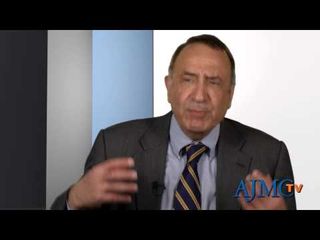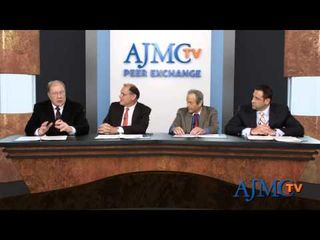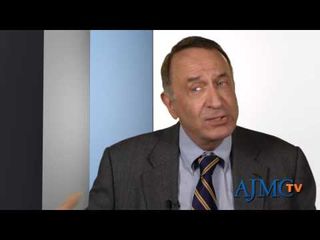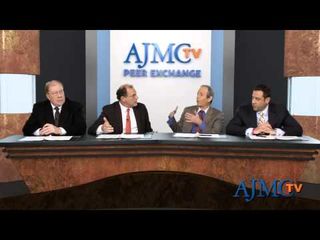
Policy
Latest News
Latest Videos

CME Content
More News

When the pandemic public health emergency eventually ends, so will the various waivers and regulatory flexibilities enacted by HHS during the COVID-19 pandemic, including the ability to provide acute hospital care at home, unless Congress acts.

Policy observers and industry stakeholders debate the possible spillover effects of Medicare drug pricing reform in the employer-based insurance market; a California federal judge rules Walgreens could be held liable for not investigating suspicious orders of opioids in San Francisco; a blood test performed the day of a traumatic brain injury (TBI) can predict which patients may die and who may survive with a disability.

In this episode of Managed Care Cast, we speak with Sachin Jain, MD, MBA, SCAN Group and Health Plan's president and CEO, about how the organization made 10% of senior managers’ annual bonuses dependent on how well the gap in medication adherence among diverse populations was reduced.

We estimate that the median 2021 premium tax credit for off-marketplace enrollees in California would be $311 if they switched to marketplace plans, with wide variation by age and plan size.

HR 5376, or the Inflation Reduction Act, is most significant piece of legislation affecting federal health policy since the passage of the Affordable Care Act in 2010; for Medicare beneficiaries, it caps insulin at $35 a month and includes other pricing reforms.

Medicaid expansion was associated with substantial changes in Medicaid managed care plan composition, which may influence a plan’s performance on enrollee experience metrics.

Efforts to close existing policy gaps and misaligned payment practices in current opioid management practices can promote greater utilization of multimodal opioid-sparing pain management options.

Limiting access to non–vitamin K antagonist oral anticoagulants through step therapy and prior authorization may exacerbate current underuse of anticoagulants and increase the risk of stroke in patients with newly diagnosed atrial fibrillation.

A recent study calculated the incidence and mortality rates for patients with Medicaid coverage who had nonventilator hospital-acquired pneumonia (NVHAP) and found possible associations between greater health care costs and NVHAP diagnosis.

Safety-net providers can benefit from demonstrations of condition-specific and defined-scope-of-practice alternative payment models that account for the nonfinancial as well as financial risks that providers face.

Despite the known potential benefits of newborn screening, the exact long-term clinical benefits and cost-effectiveness in large cohorts remain uncertain due to a lack of large-scale longitudinal research.

Social determinants of health are major drivers of the inequities seen in health outcomes, and racism is clearly a social determinant tied to life expectancy, said Karol Watson, MD, PhD, in talk Sunday at the 2022 Congress of the American Society for Preventive Cardiology, held in Louisville, Kentucky.

More people are eligible for screening, but a new analysis suggests lung cancer disparities are due to more than eligibility status.

Duke University’s Pamela S. Douglas, MD, spoke to cardiology professionals who gathered for the start of the 2022 Congress of the American Society for Preventive Cardiology (ASPC), in Louisville, Kentucky.

The study also found broad tolerability, with 98% of patients remaining on the therapy after 12 months.

Children with type 1 diabetes had the highest rates of using continuous glucose monitoring and continuous subcutaneous insulin infusion in Italy, according to recent research, but economic barriers prevent widespread adoption.

This study developed a novel algorithm for setting automatic auditing thresholds in a Medicaid program in Maryland.

Although prediabetes prevalence jumped 4.8 percentage points from 2010 to 2020, barriers to accessing diabetes prevention interventions persist, driven by cost, eligibility requirements, and data integration, leading to low participation rates.

The cost avoidance of heart failure–related hospitalizations and emergency department visits may outweigh the additional drug cost in Medicaid members adherent to sacubitril/valsartan.

This study attempts to identify the sources of the significant 2.5-fold variation found in home health expenditures, a possible indicator of inefficiency and waste.

On this episode of Managed Care Cast, we find out about efforts by a managed Medicaid health care plan in Southern California to bring prevention and intervention mental health services to schools in response to a worsening crisis among America's children and adolescents.

Four large Medicare Advantage insurers manage access to expensive physician-administered drugs with a combination of prior authorization, step therapy, and Part D formulary design.

Governor Phil Murphy signed legislation tightening New Jersey gun laws; the FDA temporarily suspended the ban on Juul sales; researchers found a cancer drug reduced risk of death among people hospitalized with COVID-19 by half.

Over the past decade, the Veterans Health Administration (VHA) has sought to boost lung cancer screening rates, but several challenges remain.

Integrating primary care with behavioral health services, improving provider training on mental health, and policy changes were all noted as strategies to combat the rising mental health and substance abuse epidemic during a keynote session at AHIP 2022.






















































